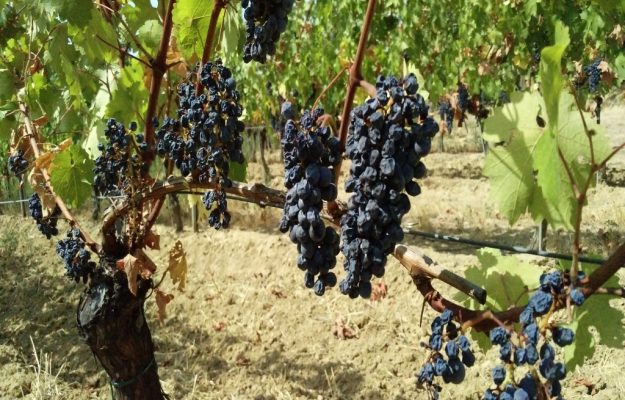The heat and drought of this long summer, far from its end, have – and will have – a huge impact on viticulture. in fact, the vine is going into water stress in different areas of the world, especially in France. The result, in the short term, is a decline in production and major difficulties in ripening. But what happens to the vine, in the prolonged absence of water? In simple terms, before veraison drought limits the biosynthesis of tannins, organic acids and some aromatic precursors as well as limiting the sugar content of the enlargement of the grape. From veraison to ripening, instead, water stress interrupts the biosynthesis of anthocyanins. Obviously, these are dynamics that vary greatly from one variety to another, and from one terrain to another.
For example, clayey soils, having the ability to retain and release water slowly, guarantee a better eco-physiological response to water stress. The different varieties, instead, can be divided into two behaviors, isohydric and anisohydric. Isohydric is the behavior of the varieties that immediately close the stomata to keep the water inside the plant, thus ensuring a stable level of foliar water potential during the day in order to reduce transpiration, and therefore water loss. The closure of the stomata, however, does not allow CO2 to enter, thus limiting the photosynthesis of the plant. An example of a variety that responds to water stress in this way is Montepulciano, which particularly suffers from drought.
Instead, we talk about anisohydric behavior when the plant reacts to water stress by only partially closing the stomata, so as to guarantee, however, the carrying out of photosynthesis: an example is Sangiovese, main grape of Tuscan viticulture, capable of tolerating even long periods of drought. However, the long-term effects should not be underestimated. As explains to the French magazine “Vitisphere” Alain Deloire, professor at the Institut Agro of Montpellier and among the country’s leading experts in the physiology of the vine, “rain and irrigation during ripening do not allow us to recover what is lost, and drought also complicates the storage of carbon in the soil, a lack that the vine will also suffer in 2023. Especially in Provence and in the Côtes-du-Rhône, where the vine reacted to water stress by remodeling its leaf wall (with yellowing and falling leaves, ed)”.
Copyright © 2000/2025
Contatti: info@winenews.it
Seguici anche su Twitter: @WineNewsIt
Seguici anche su Facebook: @winenewsit
Questo articolo è tratto dall'archivio di WineNews - Tutti i diritti riservati - Copyright © 2000/2025








































































































































































































